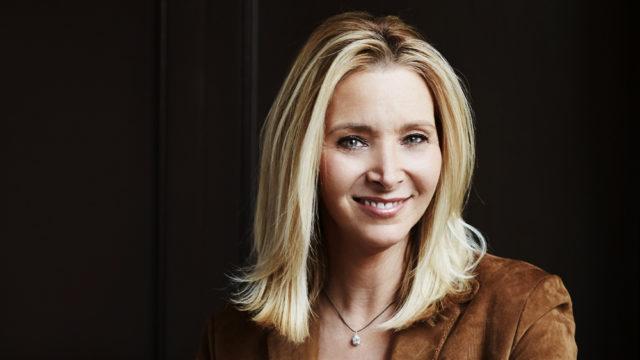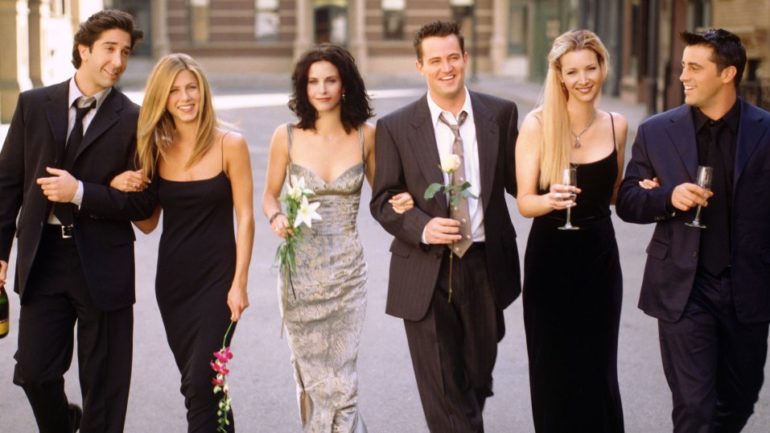The One Where ‘Friends’ Teaches Fans English, American Style
LOS ANGELES (Variety.com) – When Matt Ainiwaer visited the West Village building used as the establishing shot of Monica’s apartment on “Friends,” he got “like, very excited,” with the pop culture pilgrimage even bringing him to tears. At least four times a week, he goes to a Central Perk-themed café, modeled off of the sitcom’s fictitious coffeehouse, “just to sit on the couch, to sip on coffee, and to immerse myself… to, like, imagine I am one of the ‘.’”
Ainiwaer, a 33-year-old public relations specialist who peppers the conversation with “like” and “um” as often as Rachel or Phoebe, speaks the faintly accented American English of someone whose family immigrated to the U.S. from Asia when he was a kid.


Except that he has never lived Stateside, save for a few visits and a five-month-long work trip to Vegas. The Central Perk café that Ainiwaer visits is located in Beijing, and his casual American-isms are the product of a meticulous process in which he perfected his language skills by watching his favorite show over and over again as a college student in Shanghai.
“I was so in love with their accents,” says Ainiwaer, a native of China’s Xinjiang region. “I love American accents a lot. So I just tried to copy them – like, imitate them. I decided to tape-record it myself and get as close as possible to their accents.”
As “Friends” marks the 25th anniversary of its debut, it’s considerable that so many millennials and Gen Xers, having grown up imprinting on the NBC sitcom, are now carrying its cultural and linguistic tics across the globe.
 Friends
FriendsIt’s not uncommon to hear someone say they learned English while casually watching reruns. The New York Times in 2017 profiled nearly half a dozen Latino Major League Baseball players who used the show as a language tool . That same year, RM – leader of the popular Korean boy band BTS – proclaimed on “The Ellen DeGeneres Show ” that “my English teacher was the sitcom ‘Friends.”
“That certainly was never one of the things that we had in the backs of our minds that we hoped the show would do,” “Friends” co-creator Marta Kauffman tells Variety. “The fact that it has taught people English is just amazing icing on the cake.”
 Friends Final Episode Streaming Wars
Friends Final Episode Streaming WarsGerman web developer Marcel Fahle, 41, didn’t start watching “Friends” for its language properties, but noticed that each time he re-watched an episode, he would understand and appreciate more of the jokes – leading him to rely on the comedy for English tips. He eventually incorporated “Entourage” and “Californication” into the mix, before graduating to “Deadwood.”
“That’s higher level stuff, and I still don’t understand everything, but I still keep re-watching those things,” he says of the HBO series. “Friends” remains his recommended beginner’s guide.
Back in 2012, a Kaplan International survey found that 82% of respondents said TV shows helped them to learn English. Of that, over a quarter – 26% – relied on “Friends” for the task, even though the show had already ended its original run eight years earlier. Long-running “The Simpsons” pulled into a distant second with 7% and “How I Met Your Mother” brought in only 6% despite being a current show, then in its seventh season.
“It’s funny, because it’s such colloquial English,” says Friends” co-creator David Crane. “We actually wrote in the script all the times they say ‘like’ – that’s on us. Those are in the scripts, all the ‘uhs’ and the ‘likes.’ We actually scripted all of that, so the idea that someone’s learning English with all of our weird inverted sentences – we certainly didn’t write it as a grammar primer.”
It may not be textbook grammar, but those easy conversations between the six titular friends are what appeal to non-native speakers.
 Actress Jennifer Aniston arrives to attend a dinner organized by French luxury group Louis Vuitton for the launching of new leather accessories in Paris
Actress Jennifer Aniston arrives to attend a dinner organized by French luxury group Louis Vuitton for the launching of new leather accessories in ParisAiniwaer says that the English he learned in school in China was “not practical.” Now, Rachel interviewing for a job at Ralph Lauren? That’s what he calls “life English.” He has even relied on the show, in a previous gig as a tutor, to teach his students how to speak the language conversationally.
Fahle’s quibble with “How I Met Your Mother” is that it seemed to have more inside jokes, while “Friends” was “more like common English.” These days, he spends a small part of his day watching the series again – this time with his wife, who is Lithuanian, in an effort to improve her English. They are currently on Season 3.
“We take lunch together and then we just watch one episode [for] 20 minutes,” he says. “And on the weekend, we read an English book so her reading comprehension is better … we do these things only to improve.”
 Lisa Kudrow
Lisa KudrowJonas Templestein, the German founder of Monzo, a digital bank that reportedly has a $2.5 billion valuation, started watching “Friends” in 2007, after borrowing his sister’s DVD box set. Even as a university student in Munich, Templestein says it was “clear to me that one day I would have to go and seek my fortune in Silicon Valley, as one does,” and had read that PayPal founder Max Levchin used TV to improve his language skills. (Levchin recounts in Sarah Lacy’s Silicon Valley-focused book, “Once You’re Lucky, Twice You’re Good,” that he modeled his English first on “Diff’rent Strokes,” and then the nightly news.)
“I actually recently watched a lot of episodes [of “Friends”] and I don’t think it’s aged that well, necessarily, but I like that it’s very colloquial, it’s how you would talk to your friends,” says Templestein, who now lives and works in London. “That sometimes happens when you’re not a native speaker, that you’re relatively confident in perhaps presenting an academic paper at a conference, but you would be less confident in how to conduct yourself in a social setting.”
What helps is that even casual “Friends” fans find the show immensely re-watchable. In the U.S., its reruns are ever-present on TBS and Nickelodeon, and the show has long been popular on Netflix, which has expanded its empire to over 190 countries (though notably not in China).
“When we were doing the show, it went to certain countries, and we had great fun in hearing them translated into Italian and Spanish and French, but it’s certainly nothing like the reach that has,” says Kauffman, who spoke to Variety before HBO Max announced its acquisition of the streaming rights.
And even though “Friends’” American streaming home will soon shift from Netflix to WarnerMedia’s , many of Netflix’s 90-plus million non-U.S. subscribers will still be able to watch Chandler’s quips and Phoebe’s quirks, since it will remain on the streaming service in some international territories.
The show may yet reign over Generation Z. The 2019 annual report from British research firm Childwise Monitor, which examines kids’ and teens’ media consumption, found that “Friends” is the favorite series among children “despite almost infinite choice of programmes available to them.”
It certainly hasn’t released its hold over the 30- and 40-somethings who spent their youth watching the show. Fahle, who has watched the entire series “at least 10 times,” doesn’t plan to stop watching “Friends” any time soon.
In fact, since he and his wife recently moved to Spain, “Our next project is: when we’re done with all 10 seasons with her in English, we do the whole thing in Spanish.”
